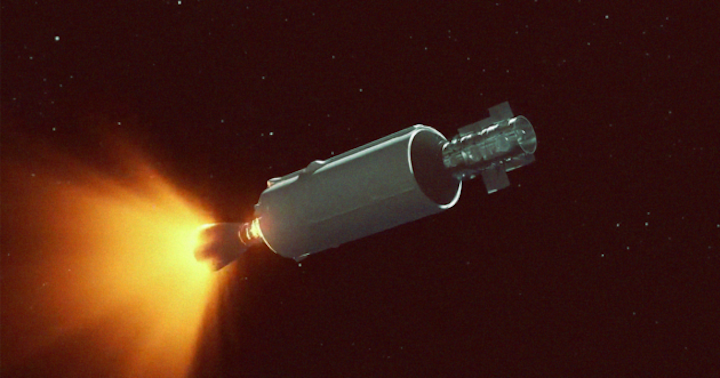20.11.2019

Nanoracks says it’ll put a metal-cutting robot to work in orbit next year as part of a satellite deployment mission, marking the first in-space test of a key habitat-building technology.
All this is due to be done under the umbrella of SpaceX’s SmallSat Rideshare Program, which promises to provide a regular route to space for small satellites.
The hardware for Texas-based Nanoracks’ first in-space outpost demonstration mission is due to ride aboard a SpaceX Falcon 9 rocket in late 2020. If the demonstration works, that would mark a significant step forward for Nanoracks’ plan to convert spent rocket stages into outposts for Earth orbit and deep space.
GeekWire was the first to report on Nanoracks’ outpost concept, more than a year and a half ago. The concept envisions setting construction robots loose inside a rocket’s upper stage, such as the Centaur stage of United Launch Alliance’s Atlas 5, after its fuel has been expended.
The robots would retrofit the upper stage and its fuel tanks to accommodate an air lock, storage space and even accommodations for human occupants. Nanoracks has offered the concept for consideration in NASA’s NextSTEP-2 space habitat initiative.
Nanoracks’ NASA-funded demonstration is meant to show that a robot built by one of its NextSTEP-2 teammates, Maxar Technologies, can cut samples of second-stage tank material safely and efficiently in space.
“Structural metal cutting has never been done in space, and SpaceX is honored to help deliver a demonstration of this capability to orbit,” SpaceX’s president and chief operating officer, Gwynne Shotwell, said today in a Nanoracks news release. “It’s promising to see more companies like Nanoracks investing in new technologies to advance the exploration of the moon and, ultimately, Mars.”
The demonstration will make use of an articulated robotic arm with a friction milling end-effector. The device is designed to mill into metal at high rotations per minute, melting the material so that a cut is made without generating orbital debris.
Over the course of about an hour, the robot would complete the cutting of three metal pieces that are representative of the material used in several types of rocket upper stages, including ULA’s Centaur. Nanoracks plans to download photos and videos of the friction milling and cutting.
The experiment would take place after the deployment of eight Spire Lemur-2 nanosatellites, which are due to be launched on the same flight under a deal that Nanoracks brokered with SpaceX. Spire’s Earth-observing and weather-tracking satellites would all fit alongside Nanoracks’ self-contained hosted payload platform on a standard piece of satellite deployment hardware known as an ESPA ring.
Nanoracks CEO Jeffrey Manber said it’s “beyond incredible” to bring together satellite deployments with an in-orbit construction demonstration on a single mission. “This is the power of commercial, and speaks loudly to the efforts of both NASA and industry to build a successful and competitive ecosystem in low Earth orbit,” Manber said.
Quelle: GeekWire
